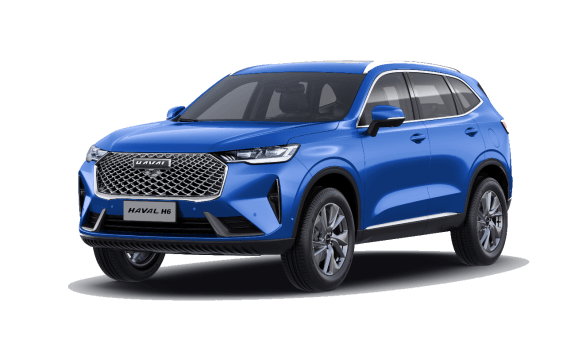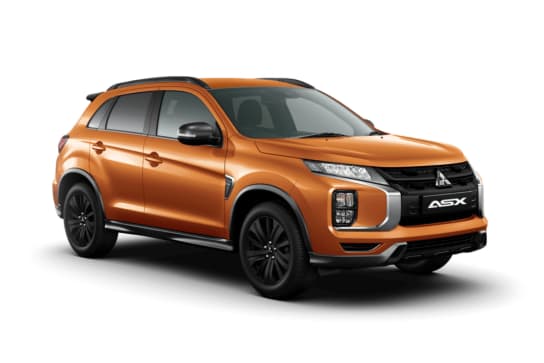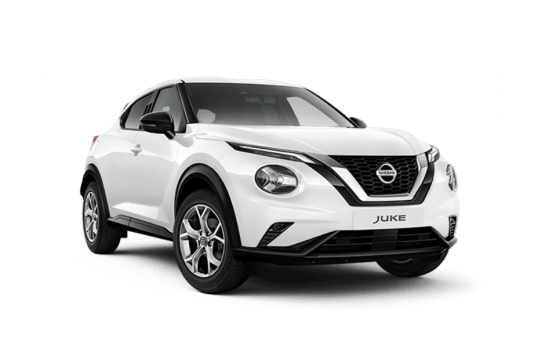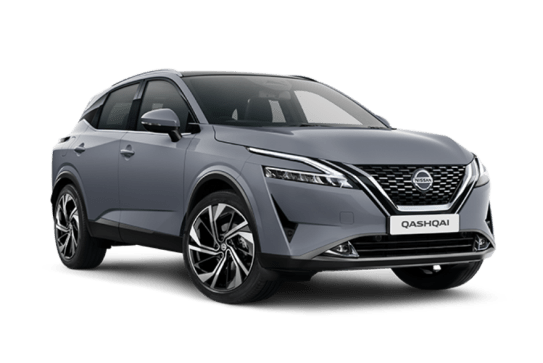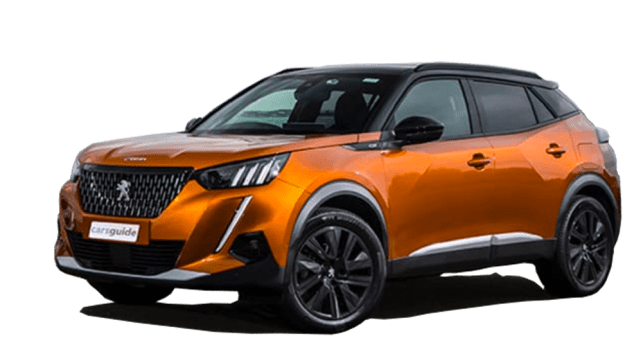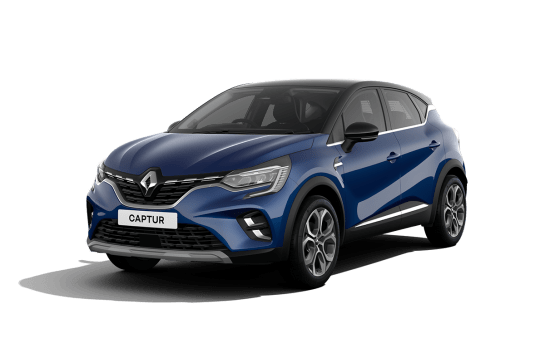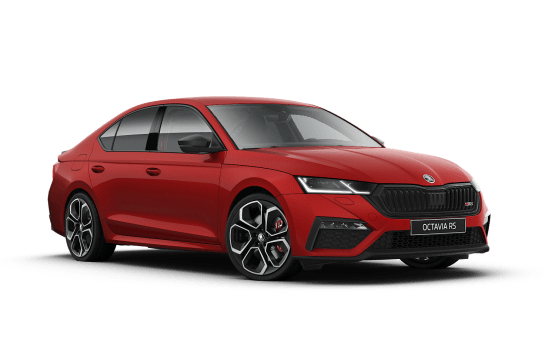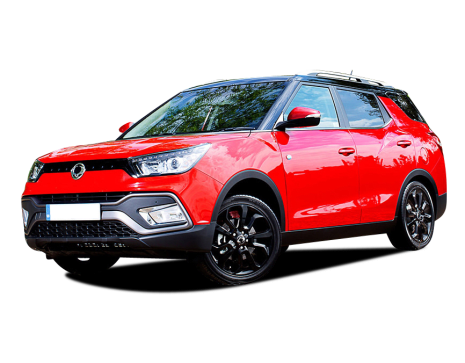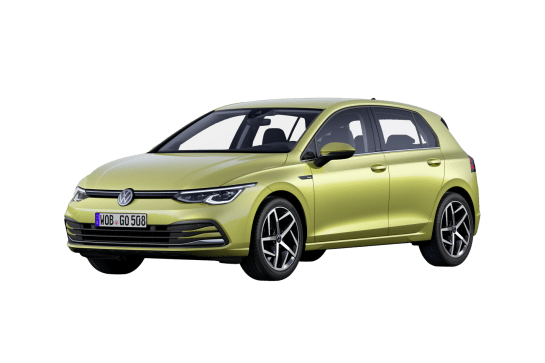
Honda CR-V VS Skoda Kodiaq
Honda CR-V
Likes
- Exceptional value for money
- Superb engineering
- Excellent family-focused packaging
Dislikes
- No full-sized spare wheel
- No hybrid AWD availability
- Firm ride
Skoda Kodiaq
Likes
- Bigger, better than before
- Cabin tech overhaul
- The keen driver's seven-seat SUV
Dislikes
- Hybrid tech unlikely for Oz initially
- Might be thirsty compared to rivals
- Probably won't be more affordable
Summary
Honda CR-V
In the distant future, automotive historians will look back at the Honda CR-V as one of the true SUV originals.
Sure, it and the conceptually-identical Subaru Forester, trailed the trendsetting Toyota RAV4 of 1994 by three years, but collectively all three Japanese brands broke and then reset the Australian family-car mould in lightning-quick time. Too much so for the floundering local car industry to ever catch up.
Today, they remain the blue-chip mid-sized SUV contenders.
Six generations in, how does the completely-redesigned CR-V in all-new e:HEV (petrol-electric hybrid) guise stack up? Let's find out!
Read more about
- Honda CR-V 2024 review: VTi L7
- Will Honda Australia Elevate its number of SUVs with the 2024 WR-V to compete against the Mazda CX-3, Nissan Juke and Toyota Yaris Cross?
- Lots of Honda electric cars on the way including 2024 Prologue SUV and new sports car concept to be shown at Tokyo - but will Australia really continue to miss out?
| Safety rating | |
|---|---|
| Engine Type | 2.0L |
| Fuel Type | — |
| Fuel Efficiency | 5.5L/100km |
| Seating | 5 seats |
Skoda Kodiaq
It’s time. Life is calling for a seven-seat SUV.
The thing is, you don’t like to follow the crowd, and you’re not drawn by the Nissan X-Trails, Honda CR-Vs and Kia Sorentos of the world. You’re looking for something a little different, a thinking person’s SUV that stands out.
There’s no better time then, to meet the Skoda Kodiaq. Now entering its second generation with some major upgrades, it could be the right SUV for your family. Does it have what it takes to make the case against those very compelling rivals?
Read more about
- If you want a cheaper Skoda, tell them! Here's why the Czech brand won't fight cut-price Chinese rivals such as the MG ZS and Haval Jolion on price alone
- No hybrids, no worries: Skoda says NVES 'not scary' but believes its model mix will need to change in coming years
- Why this electric SUV won't suffer the same fate as the Tesla Model Y and BYD Seal
We drove the Kodiaq in Europe ahead of its Australian arrival to find out.
| Safety rating | — |
|---|---|
| Engine Type | — |
| Fuel Type | — |
| Fuel Efficiency | —L/100km |
| Seating | — |
Verdict
Honda CR-V8.5/10
The most-expensive version of the latest Honda CR-V is one of the most convincing family-orientated mid-sized SUVs in Australia, regardless of price and positioning.
For efficiency, economy, driveability, packaging, safety, quality, refinement and value-for-money, it is an outstanding value proposition. Don't buy a RAV4 or Forester hybrid before checking this one out.
We cannot wait for the e:HEV hybrid powertrain to filter down to cheaper grades, to make the best CR-V in decades even more accessible.
Skoda Kodiaq7.9/10
If you’re already a Skoda buyer, you know the drill. I don’t need to tell you the Kodiaq is a genuine off-beat alternative to the mid-sized seven-seaters of the world.
If you’re a newcomer to the idea of a Kodiaq though, you’d be getting by far the best version yet. Not only is this one bigger and packed full of tech, but it’s also distinctly European in the way it drives, setting it apart from popular nameplates from Japan, Korea, and China.
Keep an eye on CarsGuide in early 2025 for detailed pricing and trim levels for the Australian market.
Note: CarsGuide attended this event as a guest of the manufacturer, with travel, accommodation and meals provided.
Design
Honda CR-V
Though considered handsome, the CR-V has never been a style leader. Function over form has always been its calling card, and Number Six is no exception.
Cleanly drawn, with boxy proportions and a blunter, squarer nose providing a contemporary if somewhat bland appearance, the Thai-built Honda lives on the larger end of the mid-sized SUV scale, resulting in lots of space and practicality.
Yet there are interesting and worthwhile details to explore, like narrower-than-usual windscreen pillars for exceptional forward vision.
The same applies to the considered positioning of the exterior mirrors, minimising blind spots, while deep glass areas allow light to flood in.
The stylish, Volvo-esque L-shaped tail-light graphic probably connects most clearly with past CR-Vs, giving the latest version an elegant overall presence.
Compared to the old model, the latest version's wheelbase has been stretched by 40mm to 2700mm, while front and rear tracks are 10mm wider, coming in at 1611mm and 1627mm, respectively.
Note that the front-drive models' ground clearance is 198mm – 10mm less than on the (non-hybrid-only) AWD grades.
Skoda Kodiaq
Like its Superb sedan sibling, the Kodiaq adopts small changes to a familiar existing formula, despite being significantly upgraded underneath.
The boxy lines of the previous car have been traded out in favour of a few more curves over the wheel arches, while the LED light fittings have been tweaked to keep them looking cutting-edge in an era of more exciting and challenging designs in this SUV space.
It doesn’t rock the boat though. This is still a big oblong of an SUV - but it does lean into the stately quality exuded by larger Skoda models, reflected in its long wheelbase and imposing bonnet height.
Sure, it’s more conservative than BYD’s aquatic Sealion 6 or Hyundai’s Land Rover-emulating Santa Fe, but it also avoids the popular sharp-edged design motifs favoured by the CR-V, RAV4, or Kia Sorento.
The interior receives a massive upgrade, particularly centred around its enormous new 13-inch central touchscreen, but there’s also a pleasing array of soft-touch materials adorning the entire span of the dash, and some nicer highlight trims, too.
The older VW Group switchgear has been swapped out in favour of the latest rotary shifter mounted on the steering column, although the Kodiaq maintains the funky two-spoke steering wheel that appears throughout the brand’s range.
Practicality
Honda CR-V
Little wonder the CR-V was the world's third most-bought SUV worldwide in 2023. It's big enough for most families' needs... and then some.
This is immediately apparent the moment the big doors are opened up nice and wide, revealing an airy, spacious and extremely user-friendly interior.
The Japanese brand has striven successfully for greater visual symmetry, harmony and operational simplicity in the dashboard's design and layout.
And, sure, the 9.0-inch touchscreen lacks the wow factor of vast buttonless displays as found in flashy alternatives such as the disappointing Chery Tiggo 7, but it works very effectively.
Hondas have always nailed the driving position bit down pat, and the RS is no exception, with ample seat and steering column adjustment, considered controls placements and unimpeded views of the instrumentation and road ahead due to the aforementioned thin pillars.
The instrumentation cluster is an electronic set-up offering the driver the choice of either super crisp and ultra-clear analogue dials, or somewhat fussier bar graphs, with a digital speedo augmenting both.
There's so much to enjoy and so little to criticise inside Honda's mid-sized SUV. Along with space to stretch, the front seats are notably comfortable and supportive, as several hundred kilometres sat ensconced in them proved. Both sides have electric adjustment at this price point, too.
Ventilation also rates highly, with the honeycomb full-dash-length grille and lovely toggle switches bringing aesthetic and tactile delight, respectively.
And, reflecting the CR-V's US focus, storage is on a large and helpful scale, offering bottle holders in the doors amongst other places to stash things in and on.
Moving to the rear seat area, entry/egress is ridiculously unimpeded, with a decently-shaped bench.
Families are also likely to appreciate series-best legroom, backed up by a handy amount of girth – always a good thing.
You're also met with occupant-facing air vents, overhead grab handles, even more door storage, the obligatory folding centre armrest with cupholders, front-seat-sited map pockets and a pair of USB-C outlets.
However, the standard sunroof does rob some headroom so people taller than about 180cm had better try before they ride, though the 60/40 backrest reclines to 16 positions and that's helpful here.
Being a hybrid, the RS e:HEV misses out on the sliding bench which adjusts by 190mm in other CR-Vs.
Vision out is exemplary back there, enhancing an already spacious and airy ambience. But if the front seat area majors on Japanese quality, the rear is hardly premium, with plenty of dreary cheap plastic trim, betraying the Honda SUV's focus on the price-driven American market. But nothing squeaked, rattled or broke, thankfully.
Further back, the tailgate rises remotely quickly enough, and there's quite a wide and long area to store things, but the electrification elements make for quite a high and uneven floor – though a deep bin area is also provided to hide stuff in.
There's also just a can of goo in lieu of a spare wheel.
Cargo capacity rises compared to the previous CR-V, ranging from 589 litres with the rear seats up, to 1636L, or 1072L if measured only to the window line.
Skoda Kodiaq
The space inside the Kodiaq feels enormous no matter which seat you’re in, with a tall roof and plenty of width. Up front, there’s a commanding view of the road, while adjustability for the seats seems extensive (although we only tested a high-spec car with electrically adjustable seats).
The new screens offer sharp software which is much better laid out than before. This makes it relatively easy to find all the functions of the car, although the resolution is so high some shortcuts can be a little hard to jab at.
The real win here is the new set of three rotary dials set below the screen in place of the touch-based sliders in other VW Group products. The two outside dials control the temperature of the climate zone, or it can cycle through the heating and ventilation for the outside seats. The centre dial controls fan speed, drive mode, or volume. It’s even customisable so you can remove functions you don’t want if you’re tired of having to press it a few times to get the function you want.
There’s no shortage of storage up front including large door pockets, cupholders in the centre console, and a massive rubberised tray for the wireless charger which disappears below the rotary dials up front.
The centre console is now enormous and features a set of floating trays that can be removed. These feature conveniently-sized brackets for quick access to keys or wallets, and included here is a little suede-style cleaning block for the touchscreen. It’s part of Skoda’s signature ‘simply clever’ features and I must say I’ve never seen it before, so props to the brand for including something new.
The rear seat is, of course, enormous, offering me plenty of room at 182cm tall behind my own driving position. Unfortunately, this car’s platform requires a significant raise in the floor below the centre seat position, which eats into legroom for centre passengers.
Back here, there’s also plenty of amenities. In the car we tested, which is reflective of what high-spec cars in Australia will be equipped with, there's a rear climate zone (rare for the segment) with an independent controller, adjustable air vents, USB-C ports, and even built-in sunshades and heated outboard seats.
Unfortunately I couldn't test the third row in our brief time with the car, although the second row is on rails, so the amount of room on offer isn’t fixed at any rate. Check back for our Australian launch review for a better analysis of the third row.
With the third row seats folded the boot offers an impressive 910 litres of space, or an ambitious 340L with the third row up. It also has its share of ‘clever’ touches, like velcro cargo dividers, an included cargo net (in addition to the sliding cover), and bag hooks on either side.
Price and features
Honda CR-V
At the time of writing, choosing the hybrid version over the regular petrol-turbo CR-V means forking out for the top-of-the-line RS. Less expensive (and luxurious) hybrid grades are expected soon.
Starting from $59,900 drive-away, it isn't cheap, especially as its two closest rivals – the RAV4 Cruiser Hybrid and Nissan X-Trail Ti e-Power e4orce – offer all-wheel drive (AWD) for around the same price, while the Honda is front-wheel drive only.
At least the RS e:HEV isn't short on equipment, especially safety, with 11 airbags, Autonomous Emergency Braking (AEB), blind-spot alert, lane-keep assist, rear cross-traffic alert and adaptive cruise control included. Check out our safety section below for more details.
Being the CR-V flagship, you'll also find adaptive LED headlights, a panoramic sunroof, dual-zone climate control, leather upholstery, powered and heated front seats, a 9.0-inch touchscreen, sat-nav, wireless Apple CarPlay/wired Android Auto, Bose premium audio with 12 speakers, digital radio, a wireless charger, privacy glass, hands-free powered tailgate, roof rails, front and rear parking sensors and 19-inch alloys.
Note, however, there is no spare wheel, just a tyre-repair kit. Not good enough. For why, please see the Cost of Ownership/Warranty section.
There's also five years' free subscription to 'Honda Connect', bringing remote-control operation for climate control, lights and locking/unlocking, trip log data, location status, geo-fencing and emergency callout.
What's missing? Along with the aforementioned AWD, some rivals at this price point include larger alloy wheels if that's your thing.
Otherwise, the RS e:HEV brings plenty of features to the table. Sadly, not of the picnic variety, however, unlike in the first two generations of CR-V (1997 and 2001).
Skoda Kodiaq
Because we’re testing European cars and the company hasn’t even started building right-hand drive examples for Australia, it’s too early to tell what the price will be, but Skoda tells us for now to expect it to stay around the same level as the outgoing car.
That should mean you can pick up a base model from the mid-$50k region, with high-spec versions reaching to the high $60-grand bracket.
When it comes to variants, we can expect there to be a new entry-level Select version with boosted standard equipment. From there, it’s likely we’ll see a more luxurious option pack and a self-explanatory Sportline version reflecting the current range. A replacement for the outgoing top-spec RS is yet to be confirmed.
This price region puts the Kodiaq in close competition with some notable rivals. In the seven-seat SUV space this includes the Nissan X-Trail, Honda CR-V, and outgoing Volkswagen Tiguan Allspace.
Half a size (and price-bracket) up will net you versions of the cool-looking Kia Sorento or the dramatically redesigned Hyundai Santa Fe, notably both cars available as hybrids, while the Kodiaq won’t be.
We’ll talk about powertrains later, but standard equipment will be bumped to include a 13-inch multimedia touchscreen with slick new software, as well as wireless Apple CarPlay and Android Auto connectivity. There’s also an upgraded version of the VW Group digital instrument cluster, an improved array of switchgear and extended soft-touch interior materials.
What will be missing for the Australian launch is the full array of connected services features that were included in the Euro-spec cars we tested.
Keep an eye out for final spec closer to the Kodiaq’s Australian on-sale date in quarter one 2025.
Under the bonnet
Honda CR-V
The CR-V hybrid is powered by a 2.0-litre four-cylinder direct-injection Atkinson Cycle petrol engine.
Married to a pair of electric motors that make a combined power output of 152kW, it delivers a system total of 135kW at between 5000rpm and 8000rpm, as well as an impressive 335Nm of torque from 0-2000rpm.
It sends drive to the front wheels via a single-speed electric continuously variable transmission (e-CVT), featuring deceleration paddles that help redirect regenerative braking energy back into the battery.
Tipping the scales at 1771kg (kerb), the power-to-weight ratio is 76.2kW/tonne. Not great, but the e:HEV's brawn lies in its hefty torque output.
Skoda Kodiaq
Expect evolution not revolution here, with the Kodiaq likely to maintain a 2.0-litre turbocharged petrol engine and all-wheel drive in the Australian market.
This is likely to be an updated version of the engine in the current outgoing model, which in overseas spec produces 150kW/320Nm. It is not in production yet, so the car we drove for this test was a 2.0-litre turbo diesel (which won’t be launching in Australia) producing 142kW/400Nm. Either way, expect a seven-speed dual-clutch automatic transmission.
Frustratingly, we won’t be getting hybrids of any kind, at least at launch. Overseas, the Kodiaq is available with a 1.5-litre turbocharged four-cylinder engine in either mild hybrid (MHEV) or ‘iV’ plug-in hybrid (PHEV) forms.
Efficiency
Honda CR-V
Like Toyota's hybrids, Honda's do not need to be plugged in; the small 1.06kWh lithium-ion battery fitted is charged by either the engine or via regenerative braking energy.
Honda says the e:HEV RS on the Urban, Extra Urban and Combined cycles should average 4.9, 5.8 and 5.5 litres per 100km, respectively. The latter figure equates to a carbon dioxide emissions rating average of 125 grams/km.
Fitted with a 57L fuel tank, that means the driver can expect to achieve about 1035km between refills – and on 91 RON regular unleaded petrol at that.
Out in the real world, we managed a still-laudable 6.5L/100km during our time with the RS e:HEV, achieved through a mixture of inner-urban and open-road driving.
Skoda Kodiaq
Expect similar fuel consumption to the outgoing car which sits at 8.2L/100km. VW Group turbocharged engines require 95RON unleaded fuel and the new Kodiaq has a variable fuel tank size depending on the engine. Check back closer to its local arrival to see more accurate figures for Australia.
It is unfortunate that it seems hybrid powertrains won’t be making it to our shores, at least in the short term, which will make it difficult for the Kodiaq to compete with hybrid versions of the Kia Sorento, Hyundai Santa Fe and Honda CR-V on the fuel efficiency front.
Driving
Honda CR-V
If the good-looking e:HEV RS's compelling value and great interior don't convince, then the driving experience might.
Building on five generations of gradual evolution, the latest CR-V uses an updated version of the previous model's all-new architecture – a very solid foundation to build an SUV upon.
Pairing that with Honda's latest hybrid electrification tech is the automotive equivalent of putting together peaches and cream. Even to a vegan.
From the first push of the starter button, the driving experience is seamless, elevating the e:HEV to the premium realm.
As it's in EV mode for much of the time at lower speeds, the SUV powers forward quickly and effortlessly, gliding along with a determined hum.
When the petrol engine eventually engages, it does so smoothly and quietly, yet the electric motor's influence and effects are far from done; the driver can sense all that torque (335Nm, remember) just from the immediacy of the throttle response.
Result? The CR-V's mid-range thrust makes it a deceptively rapid vehicle, accelerating instantly and surging strongly in almost no time at all. Keep an eye on that speedo, too, because the powertrain delivery is silken.
Furthermore, and going against type, the brakes thankfully avoid the wooden feel of many rival hybrids, and instead pull up immediately and with normal and natural pedal pressure.
Additionally, the paddle shifters provide variable off-throttle braking, though not quite down to a full stop.
Honda's chassis engineers have earned their keep when it comes to the CR-V's dynamics, too.
Light and easy around town for painless parking, the steering weights up nicely at higher speeds, allowing the driver to get into a linear rhythm with the machine, and without it feeling nervous or top-heavy when corners get tight – a rarity in an electrified SUV of this size.
And while it lacks the intimate connection of sportier SUVs like the Mazda CX-5 (given the RS badges), most people will appreciate the Honda's calm and controlled handling and road holding.
For the record, suspension in the CR-V consists of MacPherson-style struts up front and a multi-link rear end. However, a bit more suppleness would transform the e:HEV.
Wearing 235/55 R19 tyres, its ride around town is fine over larger bumps, absorbing them smoothly and without fuss, while overall tyre/road noise intrusion is pretty good, too.
Yet smaller-frequency surface irregularities, like joins and rail tracks, are not so easily dealt with, resulting in some sudden harshness.
Driven over exactly the same roads as the ZR-V e:HEV equivalent, it's clear there isn't quite the polish or sophistication that makes the smaller Honda SUV a highly-convincing dynamic and refined alternative to luxury German alternatives.
Other than the occasionally fidgety suspension, the CR-V hybrid makes for a dynamically impressive family SUV.
Skoda Kodiaq
Like its immediate relations, the Skoda Superb and incoming third-generation Tiguan, the Kodiaq’s upgraded platform comes with some notable enhancements when it comes to the experience behind the wheel.
Core changes to suspension and rigidity to the platform make for a big SUV which feels surprisingly reactive in the corners, which is doubled-down on thanks to accurate steering.
It also responds nicely to a prod of the accelerator thanks to punchy engine options and the dual-clutch auto which shifts fast and unlike a CVT lets you ride the gears out for better power delivery.
We only sampled the more powerful of two 2.0-litre four-cylinder turbo-diesel engines, although the 2.0-litre turbocharged petrol unit which we know will ship in Australia is an upgraded version of an existing well-loved engine that will only perform better with less lag.
Sure, the Kodiaq is further off the ground and heavier than some of its VW Group contemporaries, and has to work harder to tame these factors, but it’s rare in the seven-seat SUV segment to have this much fun behind the wheel.
The X-Trail and CR-V for example, may be a little smoother in traffic, especially in hybrid forms, but even cars with comparable dual-clutch set-ups like the Kia Sorento and Hyundai Santa Fe can’t compare to the Kodiaq in terms of driver engagement.
Ride quality for those moments on less than impressive road surfaces was hard to gauge on the finely-crafted European roads we drove the Kodiaq on, but the previous car was already good and I’d expect the upgraded suspension on this new one to feel even better.
Even the improved switchgear (specifically, those new control dials), and the minimally invasive active safety equipment adds to the Skoda’s appeal.
If you need seven seats, you like to drive, and you don’t want to spend truly premium dollars, it’s hard to get better in this segment.
Safety
Honda CR-V
Honda has yet to publish ANCAP crash-test results for the latest CR-V. For what it's worth, the previous two generation models achieved a maximum five-star assessment.
Today's CR-V comes with 11 airbags, including two dual front, dual side, dual front knee, front-centre, dual rear side and full-length curtains.
On the active-safety front, there is AEB with pedestrian and cyclist detection, low-speed braking control front and rear, road departure mitigation (RDM), forward-collision warning, blind-spot alert, lane-departure warning/keep, rear cross-traffic alert, adaptive cruise control (with full stop-go), low-speed follow and traffic-jam assist, traffic-sign recognition, driver-fatigue warning, adaptive driving beam and auto high beams.
You'll also find front/rear parking sensors, anti-lock braking with brake assist, 'Electronic Brake-force Distribution', hill-start assist, stability control, traction control, an intelligent speed limiter, trailer stability assist, tyre-pressure monitors and something called 'Straight Driving Steering Assist'.
An ISOFIX child-seat latch is fitted to each outboard rear seat position, while a trio of anchorage points for straps are included either on or behind, as well.
Honda says its AEB system is operational from 5.0km/h, the RDM from 30km/h, the lane support systems from 72km/h and the traffic-jam assist tech works between 0-72km/h. Top speed is 186km/h.
Skoda Kodiaq
We don’t have final spec for the Australian market, but expect the Kodiaq to maintain all the key active safety items as standard.
These include auto emergency braking (to freeway speeds), lane keep assist with departure warning, blind spot monitoring and rear cross-traffic alert. Additionally, the Kodiaq gets traffic sign recognition, an upgraded driver attention alert, and an auto-parking suite.
It is also now better at detecting objects and vehicles around it thanks to a new set of ‘nano radar’ sensors in both the front and rear bumpers.
The new Kodiaq has nine airbags and was recently awarded a maximum five-star EuroNCAP rating. Tune back in closer to its Australian arrival in Q1 of 2025 to see whether the safety rating transfers across to ANCAP.
Ownership
Honda CR-V
Honda offers a five-year/unlimited kilometre warranty that also includes roadside assistance.
At the time of publication until the end of March, there is a special offer that extends those to seven years.
Additionally, there is a six-year rust perforation warranty and an eight-year hybrid-battery module warranty.
There's also five years' free subscription to 'Honda Connect', bringing remote-control operation for climate control, lights and locking/unlocking, as well as trip log data, location status, geo-fencing and emergency callout access.
The CR-V's servicing intervals are every 12 months or 10,000km or when the engine oil monitor light illuminates, with capped price servicing pegged at an annual flat fee of $199 for the first five years.
That's under $1000 over that period of time. Nothing extraordinary here unless you remember the old days of how expensive it was to service new Hondas.
Note, however, that the e:HEV's lack of a spare wheel does bring additional costs – namely in the cost of replacing the expensive tyre-repair kit, as well as the substantial time, inconvenience and flow-on issues of a more-severe puncture that can render the CR-V undriveable if the tyre-repair kit is unable to plug the hole.
Honda is not alone in not offering a spare wheel in its hybrid SUV range, but there are real consequences in being stranded with an unfixable flat tyre that needs to be factored in. Family holidays can be made or ruined in such circumstances.
Skoda Kodiaq
Skoda is the first European brand to take a shot at a seven-year and unlimited kilometre warranty, so points there for moving the game forward.
On top of that, you can expect the usual seven-year pre-paid service pack the brand offers on its other models, although check back in for the details as they become available in Australia. Generally these packs strike a reasonable middle ground between the affordable servicing of brands like Toyota and the more expensive Subaru.
Skoda is also currently pushing a guaranteed future value program and favourable finance with more transparent terms than some of its competitors. Check back in early 2025 for all the numbers.













